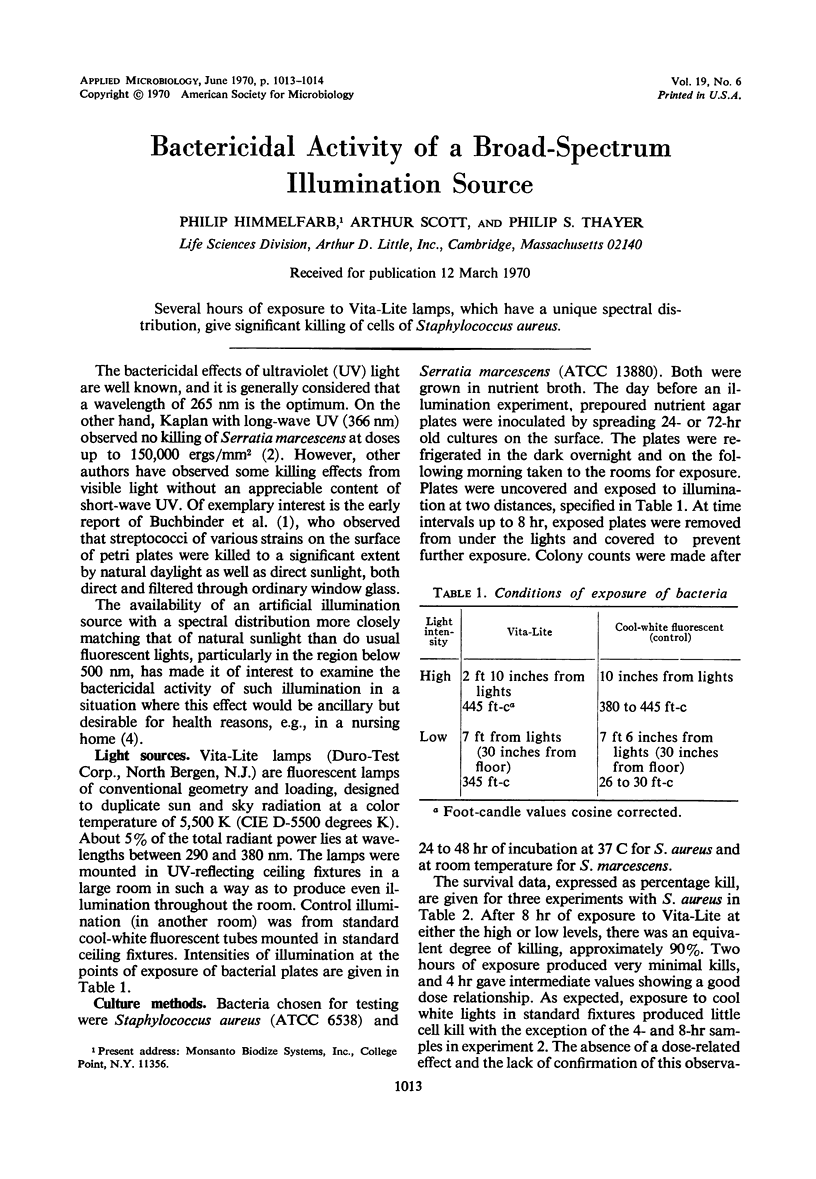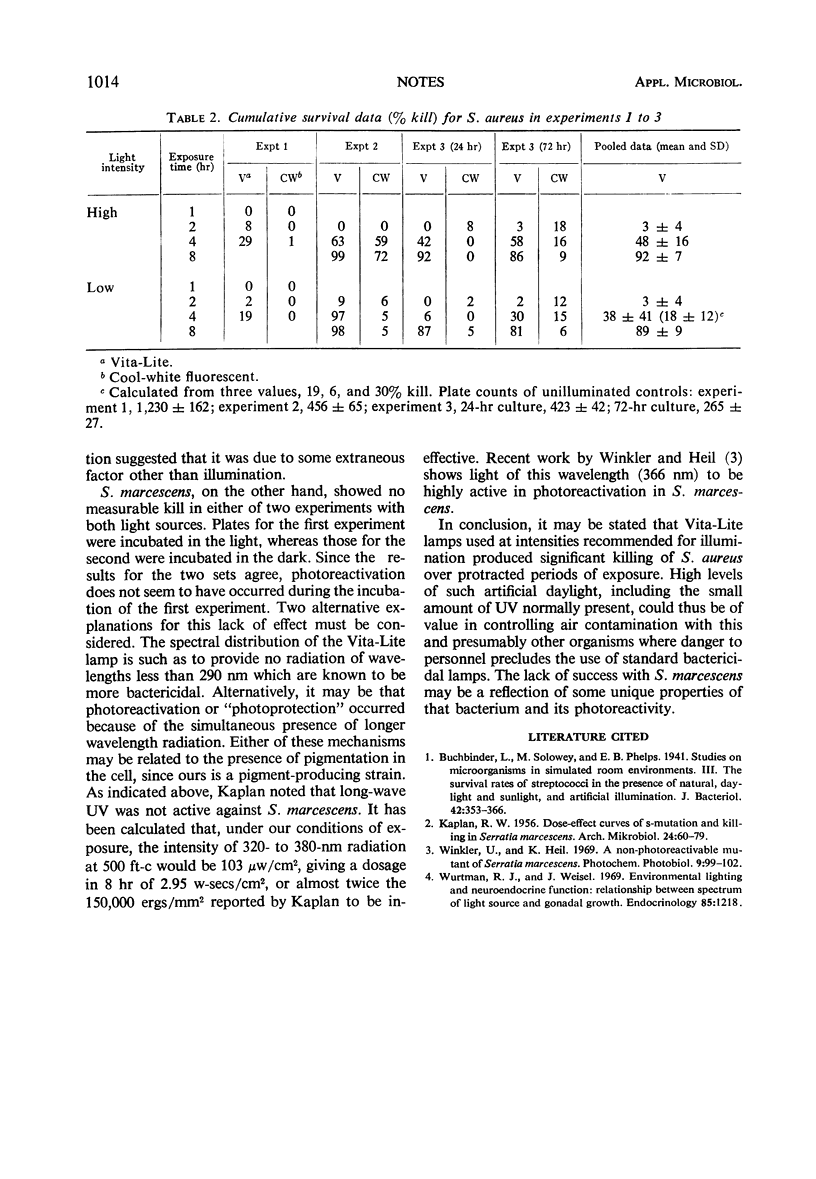Abstract
Several hours of exposure to Vita-Lite lamps, which have a unique spectral distribution, give significant killing of cells of Staphylococcus aureus.
Full text
PDF

Selected References
These references are in PubMed. This may not be the complete list of references from this article.
- Buchbinder L., Solowey M., Phelps E. B. Studies on Microorganisms in Simulated Room Environments: III. The Survival Rates of Streptococci in the Presence of Natural, Daylight and Sunlight, and Artificial Illumination. J Bacteriol. 1941 Sep;42(3):353–366. doi: 10.1128/jb.42.3.353-366.1941. [DOI] [PMC free article] [PubMed] [Google Scholar]
- KAPLAN R. W. Dose-effect curves of s-mutation and killing in Serratia marcescens. Arch Mikrobiol. 1956;24(1):60–79. doi: 10.1007/BF00418422. [DOI] [PubMed] [Google Scholar]
- Winkler U., Heil K. A non-photoreactivable mutant of Serratia marcescens. Photochem Photobiol. 1969 Jan;9(1):99–102. doi: 10.1111/j.1751-1097.1969.tb05913.x. [DOI] [PubMed] [Google Scholar]
- Wurtman R. J., Weisel J. Environmental lighting and neuroendocrine function: relationship between spectrum of light source and gonadal growth. Endocrinology. 1969 Dec;85(6):1218–1221. doi: 10.1210/endo-85-6-1218. [DOI] [PubMed] [Google Scholar]


